Toronto’s bustling urban environment is constantly evolving, but one piece of the city’s framework has lagged behind: the Multiple Listing Service (MLS) maps. Last updated by the Toronto Regional Real Estate Board (TRREB) in 2011, these maps are no longer reflective of the dynamic growth and shifting perceptions of neighborhood boundaries in Canada’s largest city. As Toronto has grown, new neighborhoods have emerged and older ones have transformed, challenging the outdated classifications that still guide real estate listings and, by extension, buyer perceptions.
Realtors like Deana Feldman from Chestnut Park Real Estate Brokerage argue that these outdated maps cause confusion and misclassification of properties. Feldman notes that areas such as Leaside and Thorncliffe Park are often interchanged on MLS listings due to the 2011 boundaries. This not only misleads potential homebuyers but also impacts visibility and potentially the value perception of properties in these areas. For example, a home listed under Thorncliffe Park, an area known for older apartments, instead of Leaside, known for its upscale single-family homes, might not attract the right buyer demographic or price offers.
The confusion extends to other areas like Yorkville, a neighborhood synonymous with luxury and upscale living. Recent expansions and developments around Charles Street have led locals and realtors to informally include this street as part of Yorkville, although it remains unclassified as such on TRREB maps. This disconnect between real-world usage and official classifications can dilute the identity and exclusivity of neighborhoods, affecting both market perception and real estate prices.
TRREB’s classification system also impacts how new developments are marketed and perceived. Davelle Morrison, another Toronto-based realtor, points out the negative connotations associated with certain areas due to outdated classifications. Newly developed condos in the vibrant and desirable Leslieville area, for example, might be listed under South Riverdale, a name that doesn’t carry the same positive recognition or community feel as Leslieville.
Despite these issues, some industry professionals, like realtor and chartered accountant Scott Ingram, believe the problem is relatively minor in the grand scheme of Toronto’s real estate market. Ingram acknowledges that while an update would be beneficial, particularly in distinguishing emerging neighborhoods and better aligning them with current realities, the market has adapted. However, he also notes that TRREB has been preoccupied with other priorities, although they are open to revisiting the neighborhood classifications.
In response to growing calls for an update, TRREB has signaled a willingness to reevaluate and adjust the geographical areas in its listings. According to TRREB President Jennifer Pearce, the board is planning to add and update the existing geographical areas and is actively seeking feedback from its members to ensure the new boundaries reflect the real-time dynamics of Toronto’s neighborhoods.
Mortgage broker Ron Butler adds a final perspective, suggesting that while real estate agents may fret over the precise neighborhood delineations, these are not typically crucial for appraisals. In the Greater Toronto Area, appraisals usually consider comps within a 10-block radius and do not strictly adhere to neighborhood boundaries.
As Toronto continues to grow and evolve, the push to update MLS maps is more than just an administrative task; it’s about accurately reflecting the lived reality of its residents and ensuring the real estate market remains vibrant and true to the identity of this ever-changing city. The question now is not if, but when these changes will be implemented and how they will reshape the perceptions and values of Toronto’s diverse communities.
-The TanTeam Editorial



